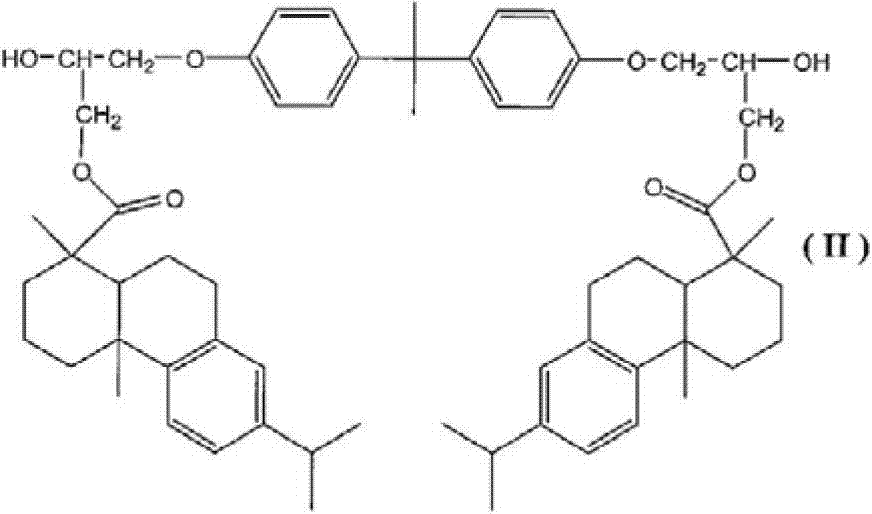Adhesive agent composition
A composition and adhesive technology, applied in the direction of adhesive types, ester copolymer adhesives, adhesives, etc., can solve problems such as insufficient capacity, and achieve less change over time, excellent whitening inhibition ability, and reworkability. excellent effect
- Summary
- Abstract
- Description
- Claims
- Application Information
AI Technical Summary
Problems solved by technology
Method used
Image
Examples
Embodiment
[0085] Hereinafter, although an Example demonstrates in detail, this invention is not limited to these Examples. In addition, preparation of the test piece used in the Example, various test methods, and evaluation methods are as follows.
[0086] (1) Preparation of optical film for test
[0087] As an example of an optical film, a polarizing film is used, and a polarizing film having an adhesive layer is produced. Apply the adhesive composition on the release film surface-treated with a silicone-based release agent so that the coating amount after drying becomes 25 g / cm 2 . Next, it dried at 100 degreeC for 90 second with the hot-air circulation type dryer, and formed the adhesive layer. Next, attach the adhesive layer to the back of the polarizing base film [a film in which triacetyl cellulose (TAC) films are laminated on both sides of a polarizer mainly composed of polyvinyl alcohol (PVA) films; about 190 μm] , crimping by pressurized rollers. After crimping, aging was ...
manufacture example 1)
[0121] Add 99 parts by weight of n-butyl acrylate (BA), 1 part by weight of acrylic acid (AA), 100 parts by weight of ethyl acetate (EAc) and 0.1 parts by weight of Parts of azobisisobutyronitrile (AIBN), and replace the air in the reaction vessel with nitrogen. Thereafter, the temperature of the contents of the reaction vessel was raised to 65° C. under a nitrogen atmosphere with stirring, and the mixture was reacted for 8 hours. After completion of the reaction, the reaction mixture was diluted with ethyl acetate to obtain an acrylic copolymer solution having a solid content of 16.8% by weight. The weight average molecular weight of the acrylic polymer was 1.67 million.
manufacture example 2)
[0123] Add 83.5 parts by weight of n-butyl acrylate (BA), 15 parts by weight of tert-butyl acrylate (t-BA), 0.5 parts by weight of acrylate-2- Hydroxyethyl ester (2HEA), 1 part by weight of acrylic acid (AA), 100 parts by weight of ethyl acetate (EAc), and 0.1 part by weight of azobisisobutyronitrile (AIBN), and the air in the reaction vessel was replaced with nitrogen. Thereafter, the temperature of the contents of the reaction vessel was raised to 65° C. under a nitrogen atmosphere with stirring, and the mixture was reacted for 8 hours. After completion of the reaction, the reaction mixture was diluted with ethyl acetate to obtain an acrylic copolymer solution having a solid content of 19.7% by weight. The weight average molecular weight of the acrylic polymer was 1.46 million.
PUM
| Property | Measurement | Unit |
|---|---|---|
| softening point | aaaaa | aaaaa |
| thickness | aaaaa | aaaaa |
Abstract
Description
Claims
Application Information
 Login to View More
Login to View More - R&D
- Intellectual Property
- Life Sciences
- Materials
- Tech Scout
- Unparalleled Data Quality
- Higher Quality Content
- 60% Fewer Hallucinations
Browse by: Latest US Patents, China's latest patents, Technical Efficacy Thesaurus, Application Domain, Technology Topic, Popular Technical Reports.
© 2025 PatSnap. All rights reserved.Legal|Privacy policy|Modern Slavery Act Transparency Statement|Sitemap|About US| Contact US: help@patsnap.com



